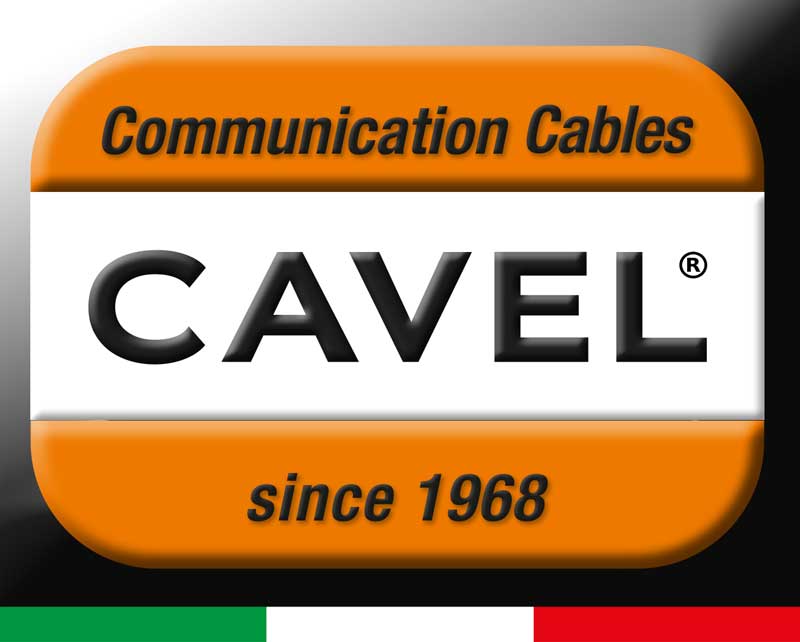DVB-T2: let's be clear - WHAT DOES IT CHANGE?
The arrival of DVB-T2 and future 5G services requires an overhaul of TV reception systems.
Below, you will find suggestions on the CAVEL® cables to use to avoid any interferences.
DVB-T2 represents the second-generation standard of digital terrestrial broadcasting. It was developed to increase the transmission capacity of a multiplexer (mux) and ensure greater spectral efficiency. Compared with DVB-T, the increase in transmission capacity can be up to 50%. This allows broadcasters to handle more bits while improving the quality of images or the quantity of programs transmitted.
There are mainly three reasons by which installers will be involved: moving channels to the 700 MHz band, possibly adding a DVB-T2 decoder, and retrofitting installations with DVB-T transmodulators. But it is also an opportunity, for dated installations, for the cabling to be comprehensively checked, from the overhead part to the distribution, to the user outlet.
Programs for changing frequencies and the TV transmission standard, defined by the Italian Ministry of Economic Development for Italy and by other ministries for the relevant European countries, have been disclosed in advance and are expected to unfold over long periods of time, offering the market and installers the opportunity to plan in advance the interventions to be carried out and adjusting the systems that will require in many cases the replacement of cabling with a positive impact on manufacturers, of which Cavel is one of the main European players.
The arrival of DVB-T2 and future 5G services requires an overhaul of the TV reception system. The installer's job is also to seriously consider replacing the coaxial cable with one of suitable quality, such as the Cavel® models described in these pages, to avoid interference and ensure a state-of-the-art job.
 |
With the switch-off of the DVB-T standard, another portion of the UHF band passes into the hands of telephone operators. We are talking of the 700 MHz band that by mid-2022 will be entirely dedicated to 5G services. Thus the UHF channels dedicated to 4G/5G services will expand from 50 to 69. This fact puts the spotlight back on the screening attenuation of a reception system and, above all, that of the coaxial cable used for cabling. For decades there has been talk of the importance of coaxial cables and their connectors, their marginal cost compared to the total cost of the system, and the importance of choosing quality cables and connectors to achieve reliability over time, even in critical conditions. By now it is almost certain that the quality cable and connector can no longer be dispensed with. What parameters should be kept in mind. Today, screening attenuation has become an even more important parameter than other more usual ones such as attenuation and structural return losses. A quality coaxial cable stands out for its ability to attenuate the signal little, this is true; but with the interfering signals of 5G/4G base radio stations, the shield, understood as the union of the braid and the foil, single or double, takes on a decisive role in preventing interference from reaching the inner conductor of the coaxial cable and, therefore, the TV signal distributed in the system. |
||||
 |
The Cavel® range of Class A, A+ and A++ coaxial cables.
Today, the varied use of the type of coaxial cable, depending on the section to be cabled, is widespread; in the future it may be even more so.
Thus, for example, any cabling to be made between the receiving antenna and the cabinet, whether pole or indoor, is best done with a coaxial cable such as DG100 and DG113 with Class A+ shielding efficiency or, even in the most difficult cases with RP 913B, Class A++.
This is because it is crucial to ensure that the receiving system has maximum protection from 5G/4G signals, present and future, as it cannot know in advance at what distance and with how much power the base radio station next to the system will transmit.
Inside the building, in the attic, the structure already offers a small screen: as long as the base radio station is not placed on or near the same roof as the building, a cable such as DG 70 or DG 80 can be selected.
Even in the home, 4G/5G signals from a smartphone or tablet can interfere in the reception system: that's why it is essential to use custom-made TV extension cables made with Cavel® cables and connectors. There are no less than 11 video tutorials available to readers:
Cavel® offers a range of cables with varying degrees of shielding to protect the system in every part of the house as well. These range from the DG 70 and DG 80 models in class A, for mounting on the floor and indoors, to the DG 100 and DG 113 in class A+, for mounting on backbones and outdoors, to the RP 913B in class A++, for the most difficult cases.
| CAVEL® COAXIAL CABLES |
CONSTRUCTION FEATURES | ELECTRICAL CHARACTERISTICS | |||||||||||||||||
| Internal conductor |
Dielectric |
Shield |
Braid |
Outer sheath |
Min. bend radius (mm) |
Longitudinal |
SRL (dB) |
Screening |
|||||||||||
| Material | Diameter (mm) | Material | Diameter (mm) | Material | Coverage (%) | Material | Braid coverage(%) | Diameter (mm) | Diameter (mm) | Single bend | Multiple bend | a470 MHz | a862 MHz | a2150 MHz | 470-1000 MHz(dB) | 1000-2000 MHz(dB) | Class | 30-1000 MHz(dB) | |
| DG70* | Cu | 0,70 | PEG | 2,90 | Al/Pet/Al | 100 % | CuSn | 73 % | 3,40 | 4,30 | 20 | 40 | 20,20 | 27,80 | 45,00 | >28 | >26 | A | >90 |
| DG80** | Cu | 0,80 | PEG | 3,50 | Al/Pet/Al | 100 % | CuSn | 65 % | 4,00 | 5,00 | 25 | 50 | 16,80 | 23,00 | 37,40 | >28 | >26 | A | >90 |
| DG100 | Cu | 1,00 | PEG | 4,30 | Al/Pet/Al | 100 % | CuSn | 76 % | 4,80 | 6,00 | 30 | 60 | 14,00 | 19,20 | 31,10 | >28 | >26 | A+ | >100 |
| DG113** | Cu | 1,13 | PEG | 4,80 | Al/Pet/Al | 100 % | CuSn | 72 % | 5,30 | 6,60 | 35 | 70 | 12,40 | 17,10 | 27,90 | >28 | >26 | A+ | >95 |
| RP913 | Cu | 1,13 | PEG | 4,80 | Al/Pet | 100 % | CuSn | 71 % | 5,35 | 6,60 | 35 | 70 | 12,60 | 17,30 | 28,80 | >28 | >26 | A++ | >105 |
|
* Also available with sheath with colored lengthwise stripes
|
|||||||||||||||||||
|
** Also available with colored lengthwise stripes or LSZH
|
|||||||||||||||||||
Download the article from the magazine



